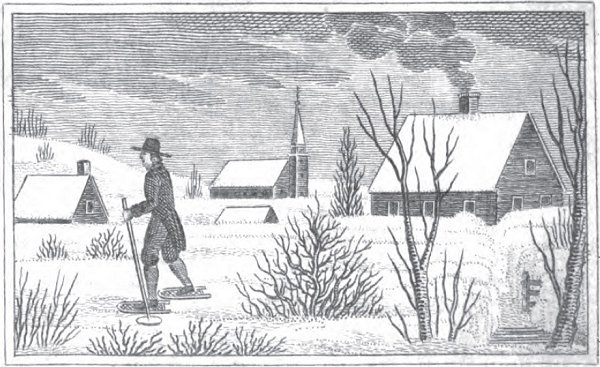Weather-Wise: The Great Snow of 1717

Get ready for more weather and climate related posts as our staff continues to research historic weather for our Weather-Wise 2021 programming!
In a recent social media post, we mentioned New Lebanon Shaker Sister Melinda Welch, who recollected from her childhood a large snowstorm in New England in 1717. The Great Snow of 1717 was a series of snowstorms that began in late February and ran through early March. The storm covered the British Colonies in North America from Virginia through northern New England with anywhere from five to fifteen feet of snow. In many cases the snow was so deep that it covered one-story houses and entire apple orchards. In New England, the storm was compounded by the large amounts of snow which had already fallen by December through mid-February of that year. Historical records show that in some places the snow drifts were as high as 25 feet.
In his 1891 book, Historic Storms of New England, Sidney Perley describes the Great Snow in detail. In one account he explains that “among the inhabitants of Medford, Massachusetts, was a widow, with several children, who lived in a one-story house on the road to Charlestown. Her house was so deeply buried that it could not be found for several days. At length smoke was seen issuing from a snowbank, and by that means its locations were ascertained. The neighbors came with shovels, and made a passage to a window, through which they could gain admission. They entered and found that widow’s small stock of fuel was exhausted, and that she had burned some of the furniture to keep her little ones from suffering with the cold.”
The Great Snow of 1717 also devastated livestock and wild animals. Entire herds of cattle and sheep were killed after being buried in massive amounts of snow. In many cases, farmers were lucky if even a few of their animals survived. In the woods surrounding New England towns, wild animals struggled to survive the lack of food. The deer population was hit particularly hard by the combination of lack of forage and the predation of bears and wolves (yes, wolves in New England). Perley notes how towns appointed “deer-reeves” to oversee the preservation of the species because roughly 19 of every 20 deer were killed.
After the storm’s conclusion, New Englanders spent most of the next month performing search and rescues looking for their neighbors and livestock. Most of what we know about the history of the storm comes from a series of contemporary accounts recorded in journals and correspondence, evidence Perley also used.
Image: “United States,” John W. Barber, Historical Scenes in the United States (New Haven: Monson and Co., 1827), page 30.

